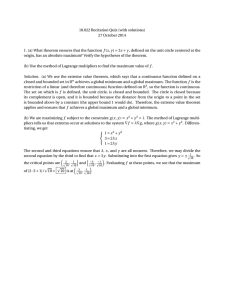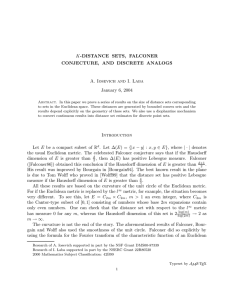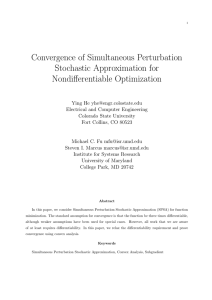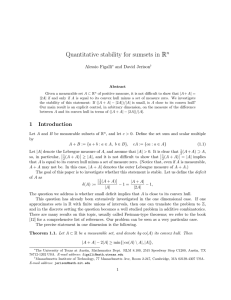Lecture on 3-7 to 3-19 1 Fundamental Theorem
advertisement
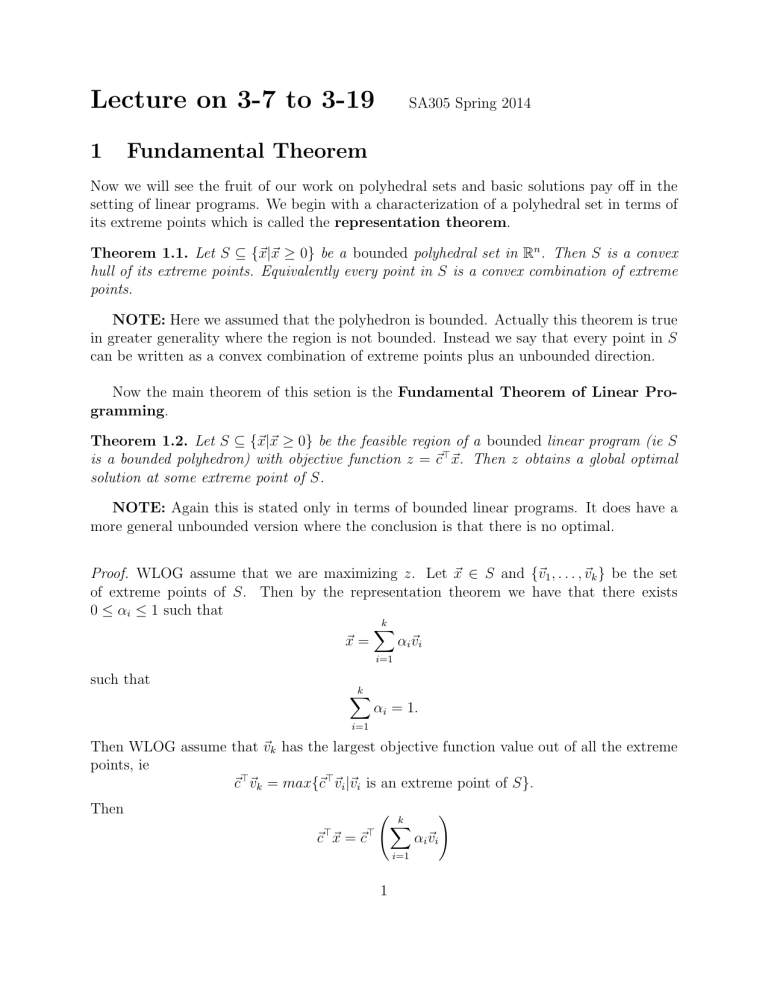
Lecture on 3-7 to 3-19
1
SA305 Spring 2014
Fundamental Theorem
Now we will see the fruit of our work on polyhedral sets and basic solutions pay off in the
setting of linear programs. We begin with a characterization of a polyhedral set in terms of
its extreme points which is called the representation theorem.
Theorem 1.1. Let S ⊆ {~x|~x ≥ 0} be a bounded polyhedral set in Rn . Then S is a convex
hull of its extreme points. Equivalently every point in S is a convex combination of extreme
points.
NOTE: Here we assumed that the polyhedron is bounded. Actually this theorem is true
in greater generality where the region is not bounded. Instead we say that every point in S
can be written as a convex combination of extreme points plus an unbounded direction.
Now the main theorem of this setion is the Fundamental Theorem of Linear Programming.
Theorem 1.2. Let S ⊆ {~x|~x ≥ 0} be the feasible region of a bounded linear program (ie S
is a bounded polyhedron) with objective function z = ~c>~x. Then z obtains a global optimal
solution at some extreme point of S.
NOTE: Again this is stated only in terms of bounded linear programs. It does have a
more general unbounded version where the conclusion is that there is no optimal.
Proof. WLOG assume that we are maximizing z. Let ~x ∈ S and {~v1 , . . . , ~vk } be the set
of extreme points of S. Then by the representation theorem we have that there exists
0 ≤ αi ≤ 1 such that
k
X
~x =
αi~vi
i=1
such that
k
X
αi = 1.
i=1
Then WLOG assume that ~vk has the largest objective function value out of all the extreme
points, ie
~c>~vk = max{~c>~vi |~vi is an extreme point of S}.
Then
k
X
~c>~x = ~c>
i=1
1
!
αi~vi
=
k
X
αi~c>~vi
i=1
≤
k
X
αi~c>~vk
i=1
=
k
X
!
αi = 1 ~c>~vk = ~c>~vk .
i=1
Hence the objective value of any solution is less than the objective value of the largest
objective value extreme point.
2





